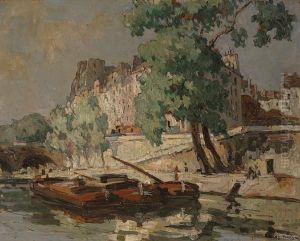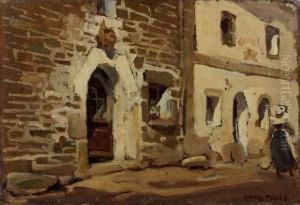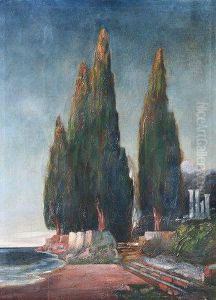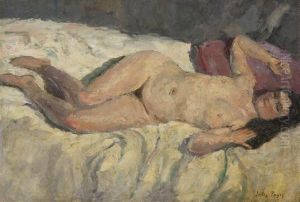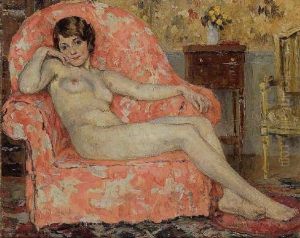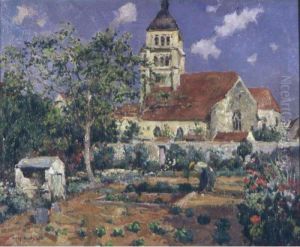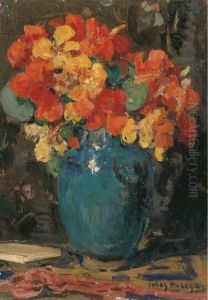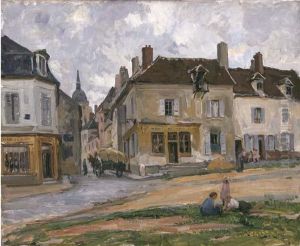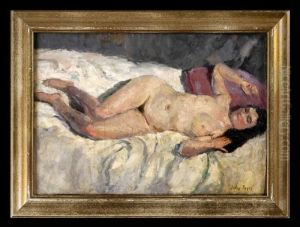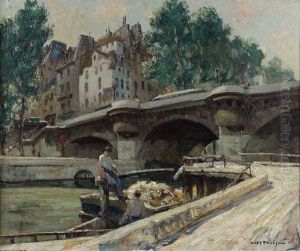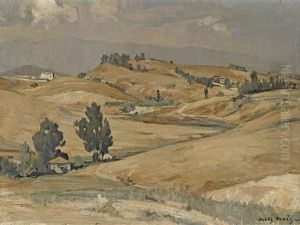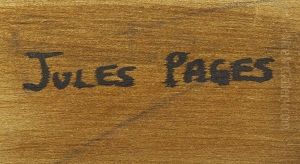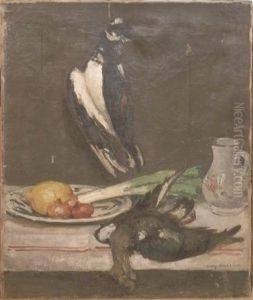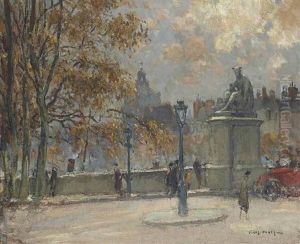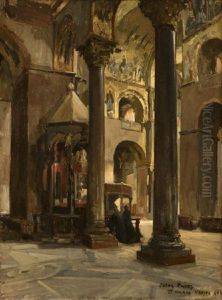Jules Eugene Pages Paintings
Jules Eugène Pagès was a French-American painter known for his impressionistic landscapes, cityscapes, and marine scenes. Born on May 16, 1867, in San Francisco, California, to French parents, Pagès spent his formative years in an environment rich with cultural diversity, which later influenced his artistic style.
After his early education, Pagès moved to Paris to study art at the prestigious Académie Julian under renowned teachers such as Jean-Joseph Benjamin-Constant and Jean-Paul Laurens. His time in Paris exposed him to the impressionist movement, which was sweeping through the art world at the time. He absorbed the techniques and philosophies of impressionism, which would become a defining characteristic of his work.
Pagès traveled extensively throughout his career, drawing inspiration from the various cultures and landscapes he encountered. His travels took him across Europe, North Africa, and back to the United States. The artist's works often depicted the everyday life of the places he visited, capturing the essence of the moment with vibrant color and dynamic brushwork.
Despite his French roots, Pagès remained connected to his birthplace, San Francisco, and frequently returned there to paint and exhibit his work. He participated in the Panama-Pacific International Exposition in 1915, where he received accolades for his contributions.
During World War I, Pagès served in the French army, and his experiences during the war impacted his art, infusing it with a deeper sense of humanity and emotion. After the war, he continued to paint and teach, influencing a new generation of artists with his impressionist approach.
Jules Eugène Pagès' paintings were well-received during his lifetime, and he was a member of several prestigious art societies, including the Société Nationale des Beaux-Arts in Paris and the San Francisco Art Association. His works can be found in numerous public and private collections around the world.
On June 22, 1946, Jules Eugène Pagès passed away in San Francisco, leaving behind a legacy as one of the prominent impressionist painters of his time, bridging French and American art scenes with his vibrant and evocative work.
